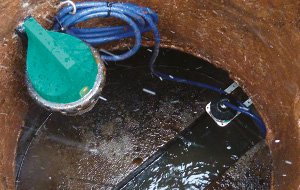Wastewater and rainwater networks

Energy autonomous, equipped with a high-performance GSM antenna, watertight (IP68), the SOFREL LT-US meets the instrumentation needs of water networks..
Thanks to its ultrasonic sensor for level measurement, the LT-US data logger enables continuous monitoring flow into collectors or discharges into the natural environment.
Simple to set up, offering excellent autonomy (battery powered), the LT-US provides a perfectly optimized solution for the control and exploitation of waste water and rainwater networks:
- Self-monitoring
- Continuous diagnostics
- Flow measurements and calculations
- Flow recording with reference to alert thresholds…
Main Fonctions
Offering 2 digital inputs (DI) for event signalling (buffer opening, occurrence of overflows, sensor faults, etc.) and 1 optional analogue inputs (AI) (level measurement), the SOFREL LT-US combines functions which enable it to:
- Connect to overflow sensors (SOFREL CSV or others),
- Measure the level via 4-20 mA ultrasound sensors (sensor directly powered by LT at 12V),
- Calculate daily overflow numbers and times,
- Time-stamp each overflow event
- Automatically archive water height according to variable time periods (e.g. power supply for ultrasound sensor and recording of level during periods of rain),
- Control an autonomous sampler,
- SMS sending alert when a DI status is changing of a threshold is exceeded,
- Periodic, programmed or event-based communication with 1 or 2 PC.
Download SOFREL LT-US data sheet
An ultrasound probe fully controlled by the data logger
Fully integrated into the LT-US, the ultrasound probe is directly powered by the data logger battery. Combined with an overflow detector and thanks to its variable archiving frequency (e.g. every 30 min. in normal periods, then every 1 min. during overflows), the operating endurance of the LT-US can be as long as ten years.
The data logger is started up and its ultrasound probe calibrated very easily using the SOFTOOLS graphical user interface via a Bluetooth link.
The remote administration of the ultrasound probe (up to 5 metres away), placed as close as possible to the effluents being measured, maintains the data logger in the best area of GSM reception (the highest point in the manhole).

